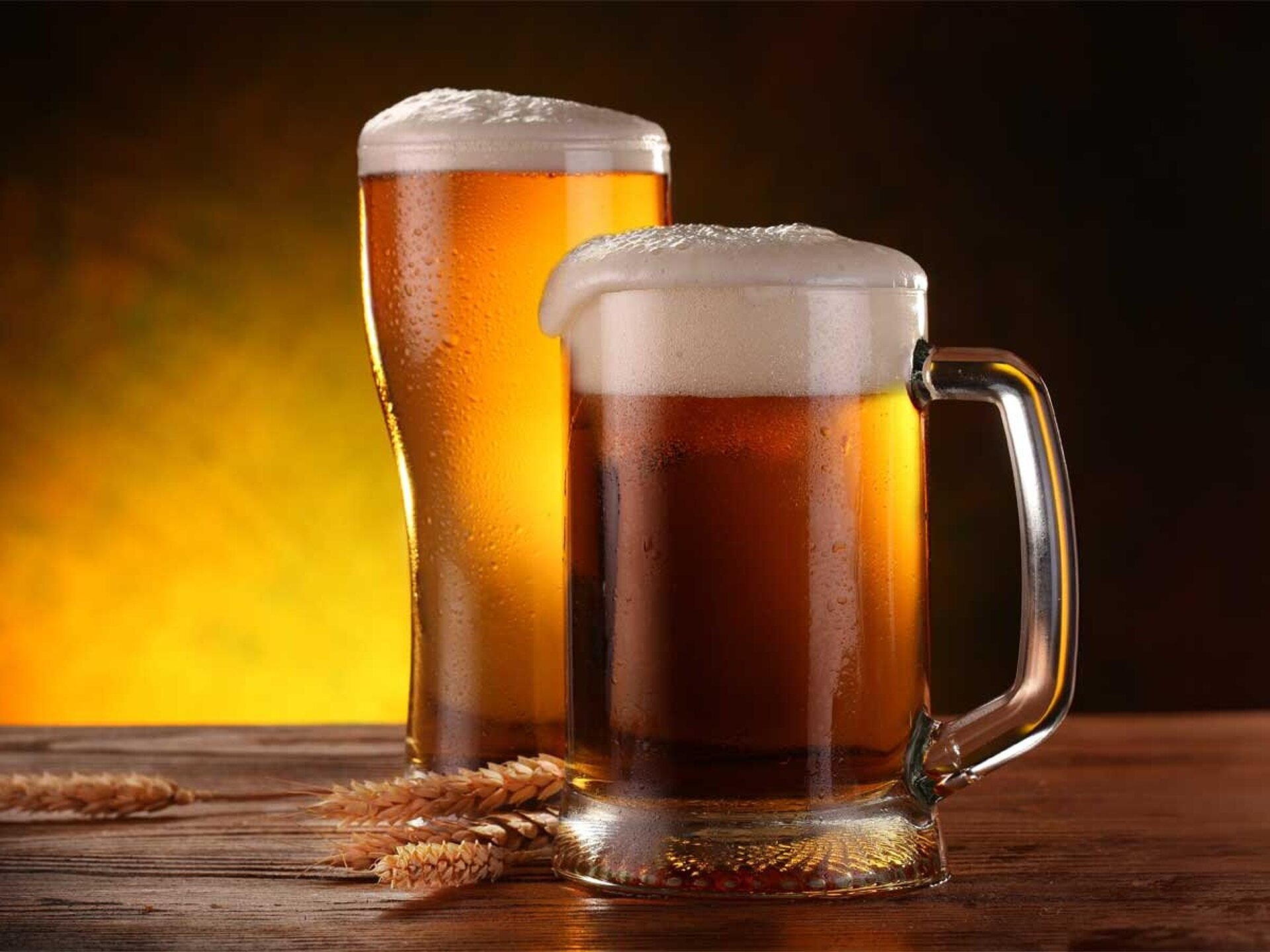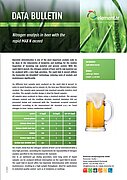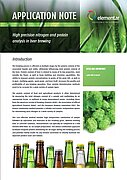Beer - A legendary history

Oktoberfest is currently in full swing in Munich: a lavish celebration of traditional Bavarian culture, music and, of course, beer. Dating back to 1810, this world-renowned festival started as a royal wedding celebration and has since grown into a major annual event attracting millions of visitors. Beer itself has a rich history, originating around 13,000 years ago. For centuries, it has been known as a beverage and a food. In the Middle Ages, even children were given beer to drink because it contained more nutrients and had fewer germs than water. Freshly brewed beer was very digestible and contained hardly any alcohol, which only develops over time during fermentation. Hundreds of years ago, people didn't drink beer to become intoxicated but rather for health reasons. To this day, most beers are still brewed according to the German Purity Law of 1516.
Learn more about the history of beer in the following timeline.
Around 11,000 BC
In the cave of Rakefet (Israel) operates what is believed to be the oldest brewery in the world. It is discovered by researchers only in 2018.

Rakefet mortars for crushing malt. Source: Dani Nadel, CC BY 3.0, via Wikimedia Commons
3,400 - 2,900 BC
Beer was already being brewed in China at this time, as evidenced by the oldest surviving beer recipe.
900
The Irish pub “Sean's Bar” opens its doors in Athlone, Ireland. Today, it is considered the oldest pub in Europe.

Sean's Bar in Athlone, Ireland. Source: Serge Ottaviani, CC BY-SA 4.0, via Wikimedia Commons
April 23, 1516
Dukes Wilhelm IV and Ludwig X issued a new Bavarian state decree in Ingolstadt governing the production of beer called the Munich Purity Law. Today’s German Purity Law is based on this regulation and states that beer can only consist of barley, hops and water. The later Landshut Purity Law allows for the adding of malt to the mix. Before the regulations, adding sugar or other substances to beer was common, as it allowed the unscrupulous to make more profit from the beverages they sold.
1680
The Dutch naturalist and most important microscopist of the 17th and 18th centuries Antoni van Leeuwenhoek succeeded in laying the foundation for the discovery of yeast as an organism with his invention of the first microscope-like apparatus.
1857
The French chemist Louis Pasteur ends a 20-year dispute among chemists as to whether or not yeast is a living organism. His most famous saying in this regard: “No fermentation without organisms.” and “Every fermentation by a specific kind of organism.” From 1857 onwards, the general consensus was that yeast is a living organism. This discovery significantly contributed to the emergence of modern brewing technology.
“No fermentation without organisms.”
“Every fermentation by a specific kind of organism.”Louis Pasteur

Louis Pasteur.
Source: Paul Nadar, Public domain, via Wikimedia Commons
November 12, 1883
Emil Christian Hansen successfully isolated a yeast cell for the first time at the Carlsberg Laboratory in Copenhagen. He also managed to cultivate the first pure culture of a brewing yeast from it. This discovery fundamentally revolutionized the art of brewing – until then, the yeast in all breweries around the world consisted of a mixture of top and bottom-fermenting yeasts and bacteria. The Carlsberg Laboratory published this information and made it available to the whole world. Since 1883, this has allowed different varieties of beer to be brewed.

Carlsberg Laboratory in Copenhagen, Denmark. Source: Public domain, via Wikimedia Commons
March 4, 1918
The German Purity Law is mentioned for the first time in the minutes of a session of the Bavarian Parliament. Based on the ordinance of 1516, beer may contain only hops, malt, yeast and water. Malt is the result of malting, i.e. a grain that has been briefly germinated and dried again. This process forms and activates enzymes in the grain that are necessary for brewing beer. It can therefore be assumed that in 1516 malt could only be obtained from barley.
1950s
The designation “Reinheitsgebot” (German Purity Law) also catches on outside Bavaria. However, this was due to the many disputes over the increase in imported sugary beers.
Today
In Germany, the binding legal basis for brewing beer is not the German Purity Law, but the Provisional Beer Tax Act of 1993, which also contains the definition of beer ingredients. International standards include the EBC Standard 9.9.2 for the determination of protein content by the Dumas method. The protein content in beer can be determined with dedicated N/protein analyzers, for example with the rapid MAX N exceed from Elementar.
Modern breweries produce beer under the highest hygienic standards. With equipment that precisely controls and monitors the brewing process and the processing of raw materials. However, the principles of brewing have not changed: beer is brewed according to the German Purity Law.
There are an estimated 10,000 to 15,000 beer brands and approximately 100 beer styles around the world. Brand diversity is still greatest in Germany, even though countries such as the USA and Italy have caught up enormously in the last 10 years.
Find out more
Quality and process control in brewing
N/protein determination is one of the most important analytical tasks to be performed in brewery and malting laboratories for routine inspection of incoming barley and malt raw materials and process control, as the monitoring of the protein content is important for the fermentation process and alcohol production. Furthermore, protein content supports assessing the beer quality regarding formation and stability of the foam. Download our application information to learn more about nitrogen and protein analysis in raw materials and beer products.
Do not miss any new articles
NEWSLETTER
We will constantly publish new blog articles. Register for our newsletter to stay up-to-date and get informed about latest blog articles, news and trends.



